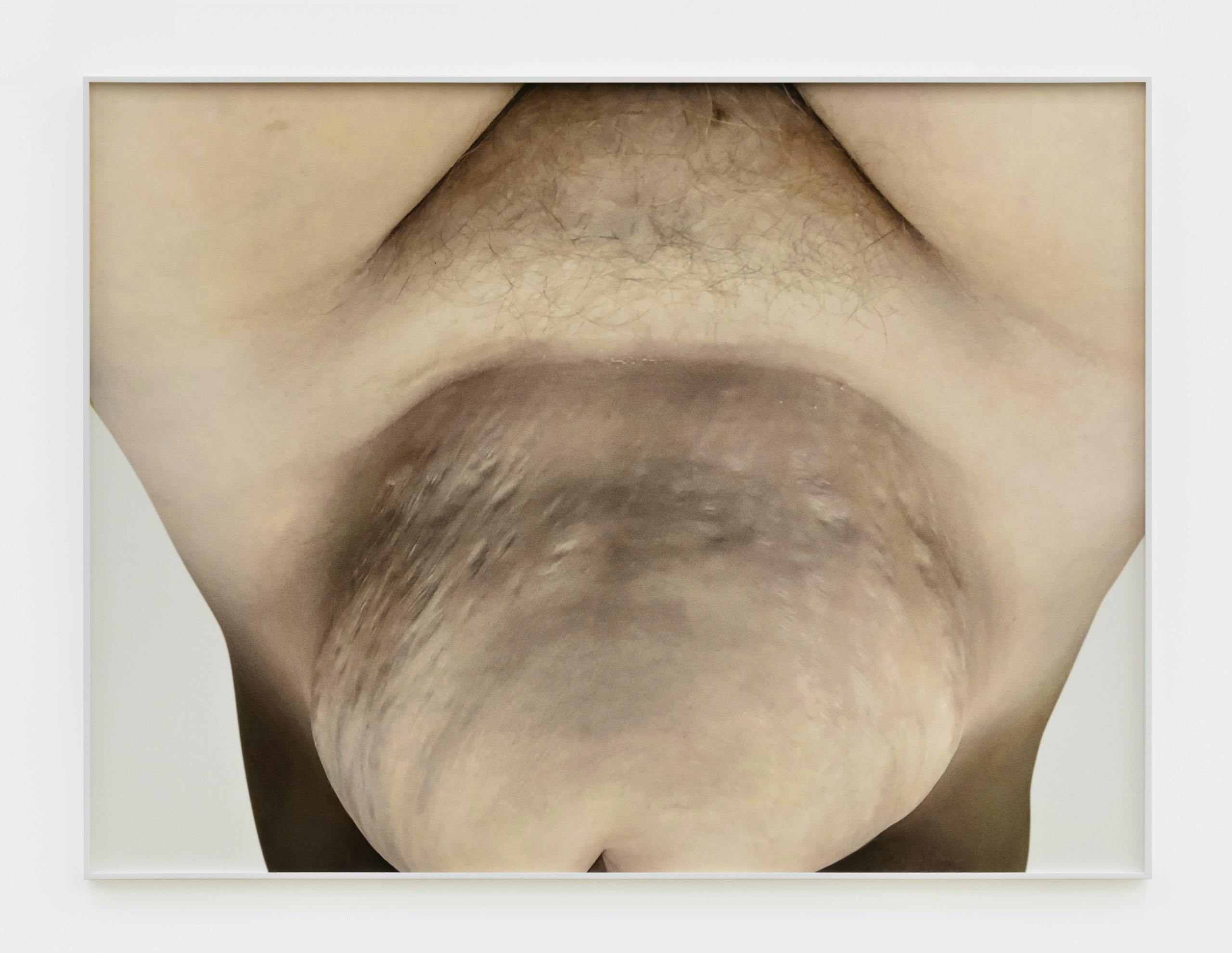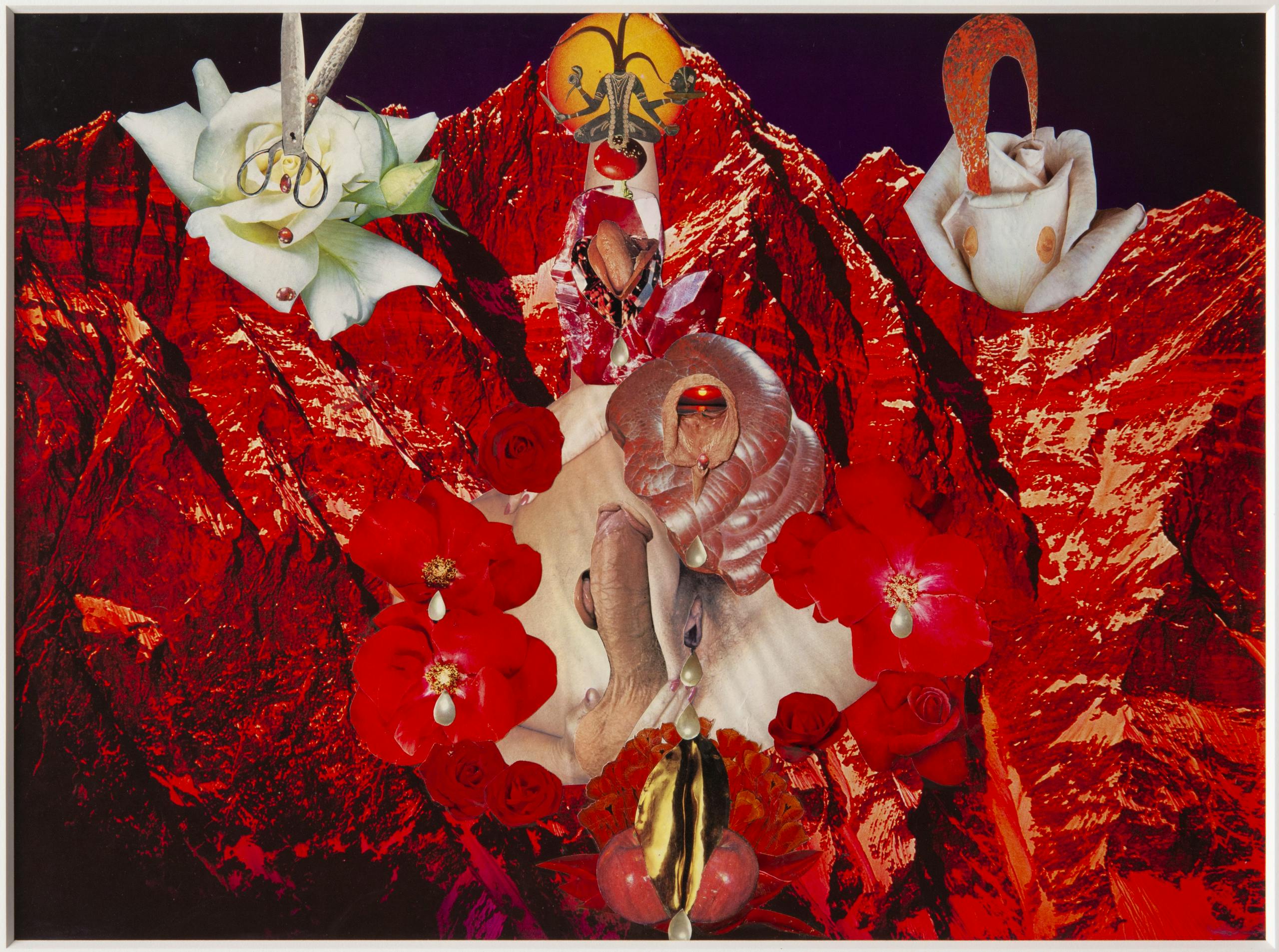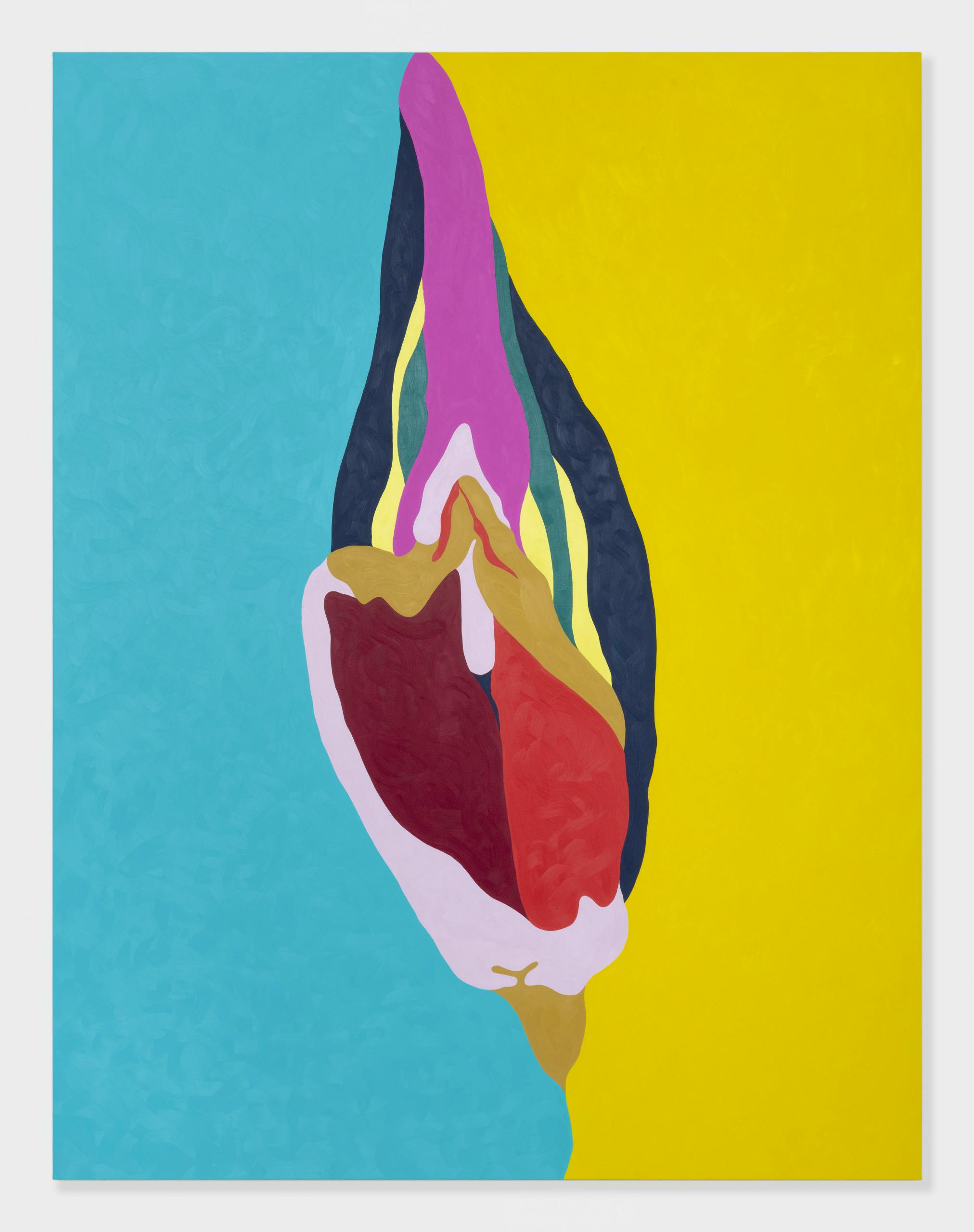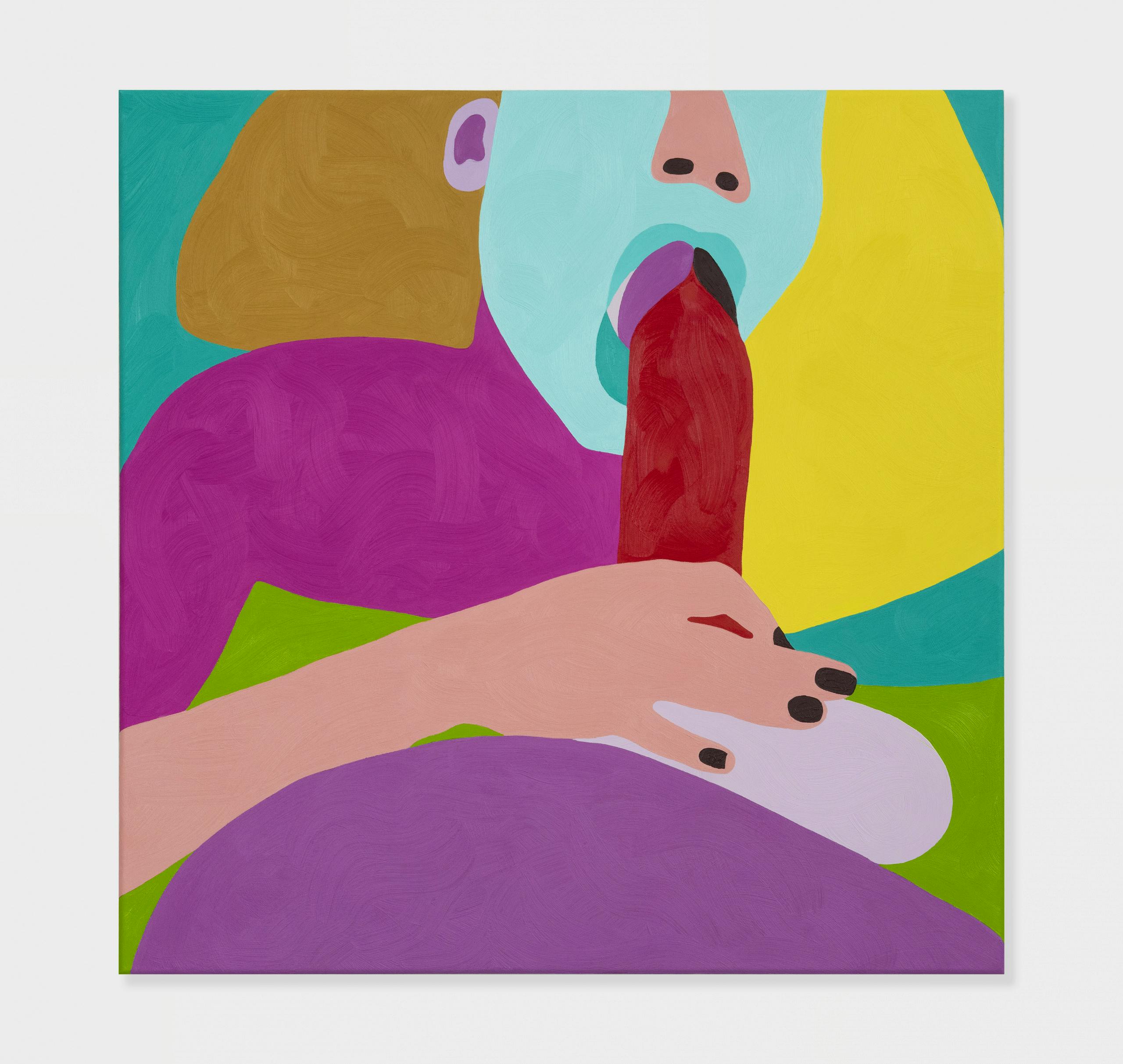A present by censored artists exploring artistic censorship
Who gets to decide what’s appropriate for public consumption? That’s the question at the heart of a new exhibition at Mayfair-based gallery Unit London, titled Sensitive Content. The show presents works spanning the 1940s to the present day which have been deemed unfit for display for various reasons; but many of the pieces are united by the fact they “platform marginalised groups”.
Sensitive Content is curated by Alayo Akinkugbe, founder of A Black History of Art, artist Helen Beard, whose own works have been censored, and Professor Maria Elena Buszek, author of A Companion to Feminist Art. Among the artists whose work is on show are Pussy Riot, Betty Tompkins, Renee Cox, Xiao Lu, Renate Bertlmann, and Beard herself.
Top: Penny Slinger, The Golden Pyramid, 1976-1977; Above: Renee Cox, Yo Mama’s Last Supper, 1996
The grounds for the censorship varies wildly, and is often both topical and very much of its time. Some have been censored by social media platforms; others by governments; others by the very arts institutions that would have us believe they’re all for celebrating work that prioritises reflections of artists’ realities and which challenges viewers and provokes new ways of thinking.
In showing works by artists with first-hand experience of having their work deemed ‘unacceptable’ to be shown in public, Sensitive Content aims to give “systematically marginalised groups” a voice, and demonstrate how, conversely, censorship has galvanised those artists in their ambitions to create works that actively challenge not only the viewer, but the political and art world status quo.
 Polly Borland, Nudie 14, 2021
Polly Borland, Nudie 14, 2021
 Polly Borland, Nudie 10, 2021
Polly Borland, Nudie 10, 2021
“The work in this exhibition tracks what has and hasn’t changed in terms of ‘objectionable’ imagery since the rise of post-World War II civil rights movements,” says curator Maria Elena Buszek. “Whether blocked by government censors or AI, the artists chosen for exhibition in Sensitive Content have all faced censorship in their careers — not necessarily due to the prurient or agitational nature of their work, but more often because their marginalised perspectives on sex, beauty, and politics confuse or threaten the dominant narratives on these topics.”
Among the earlier works on show are Betty Tompkins’ paintings, which were seized by French customs in 1973 due to “obscenity”. Penny Slinger’s work faced a similar, but more dramatic fate: her collaged books “depicting sexual and metaphysical imagery” were burned by UK customs. If ever proof were needed of her and her art’s resilience, however, within a year of that happening she’d released a volume containing no fewer than 600 illustrations.
 Penny Slinger, Scarlett Woman, 1976-1977
Penny Slinger, Scarlett Woman, 1976-1977
One of the many highlights of the exhibition is Renee Cox’s 1996 interpretation of da Vinci’s Last Supper, Yo Mama’s Last Supper. When the work was exhibited as part of a group show at the Brooklyn Museum of Art in 2001, then-New York Mayor Rudolph Giuliani called for the museum to be defunded.
Many of the works have faced the very modern-day issue of online censorship, where, as the gallery puts it, “artwork is removed according to the will of algorithms” as it’s increasingly up to AI filters to determine what is and what isn’t ‘appropriate’.
Despite a 2019 meeting at Facebook (now Meta) HQ to discuss reconsidering the platform’s nudity guidelines and their impact on art – a move precipitated by a grassroots campaign of petitions, complaints and protests – artists still find their work removed from social media daily. For those who use the naked body as a point of thematic focus, that means missing out on the vast potential audiences online platforms offer – and potentially on opportunities in bricks-and-mortar art spaces, as well as the support of the art world more widely.
 Helen Beard, Selenicereus Grandiflorus (Queen of the Night), 2022
Helen Beard, Selenicereus Grandiflorus (Queen of the Night), 2022
 Helen Beard, Equilibrium I, 2022
Helen Beard, Equilibrium I, 2022
Sensitive Content is on display at Unit London until October 16; unitlondon.com
